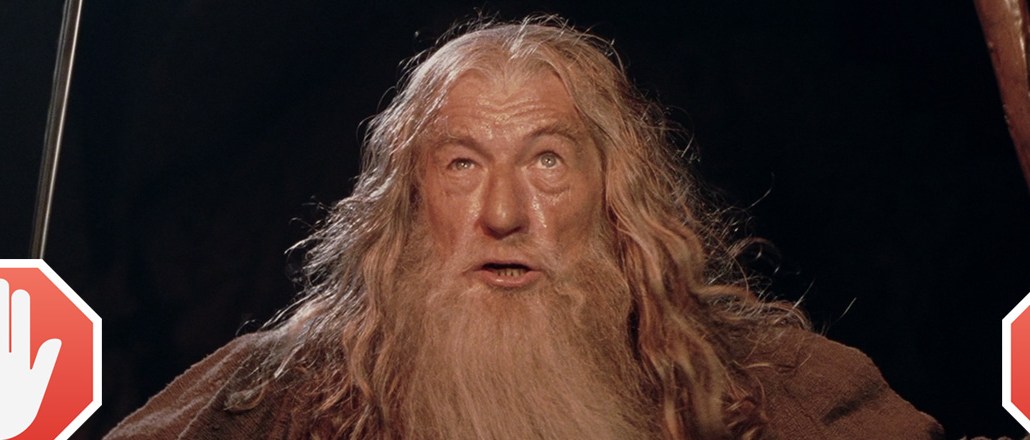Save 50% on a 3-month Digiday+ membership. Ends Dec 5.

Ben Kunz is vp of strategic planning at Mediassociates, a media planning and buying agency.
Every so often, the ad industry enters a panic mode tied to a subconscious self-loathing. Last year, Facebook slashed the organic reach of brand posts making ad gurus fret: Can social media work as a marketing platform? (Admit it, we always wondered.) Today, the issue is the use of ad blocking software to stop banner ads from popping up on screens. Digital marketers already struggling with viewability, ad fraud and low ad-response rates are shriveling in the cold realization that their audience may all go away.
I say, bring it on.
Ad blocking could be the best thing that has happened to the ad industry in years. It will make the remaining communications universe work better, encourage marketers to be more relevant and give publishers an incentive to back down from too much clutter.
But before we evaluate the positives, it’s worth asking how far ad blocking will go.
This latest “crisis” was kicked off by an Adobe and PageFair report that found that the use of ad blocking tools is, well, way up. Two hundred million people now block digital ads, about 7 percent of the 2.8 billion humans online — up from 30 million ad blockers just four years ago. And there are pockets of heavier usage. In the United States, one in seven people obstructs ads online, but in Oregon, the state with the highest use, it’s one in six. In Greece, 38 percent use ad blockers.
Play it forward, and very soon one in three global online users may block digital ads, driven primarily by worry of how marketers are using their private data.
Ad position: web_incontent_pos1
Behind the scenes, a major tech player is stoking this. Apple announced at its latest development conference that the newest edition of its mobile operating software, iOS 9, will support Safari ad blocking. This is a super-clever move, because in one swoop, Apple is “improving” the user experience while driving marketers by necessity to apps, where Apple makes about $20 billion a year in “services category” revenue. Apple’s move also slaps its rival Google, which lives on browser-based advertising. Apple saying ad blocking helps users is like Coke saying it helps you by not selling Pepsi in its vending machines.
Still, ad blocking is a great idea, because it removes the fat from marketers’ audiences.
Digital advertising has always had three vast sources of lard: ads reaching users who don’t want to see them; non-viewable ads, where some ads paid for never appear inside a viewable screen window; and ad fraud, where “bots” pretend to be humans creating fake ad impressions, ad clicks or even conversions. Smart marketers have tools to fight viewability bloat (such as Moat Analytics that measures the percentage of ads seen) and ad fraud (such as data filters that ensure ads reach actual humans). But no one has invented a tool to predict whether a real human being will hate seeing your ad.
Until now. Ad blocking in reality is a self-selection tool in which humans who despise ads won’t have money wasted on them. Surely a marketer who is spending $1 million in digital advertising should be happy she isn’t wasting $300,000 on people who are resistant. Tools like Adfender, Ad Block Plus and Privoxy have done nothing more than tell Bernie Sanders that for his next fundraising lunch, he may not want to invite the staff of Fox News.
Ad blocking will also put pressure on marketers to be more relevant and on publishers to not clutter up their pages with those damned CPM-hosing slide shows. There is a risk that publishers, fearing further declines in ad revenue, may try ever-more-sneaky outlets for native advertising in which marketing messages are disguised as editorial. If publishers bastardize their value too much, audiences will leave. But that’s a tale for another column.
Ad position: web_incontent_pos2
In truth, we are witnessing a predictable Age of Interactivity in which consumers, newly empowered with numerous ordering devices, are rebelling against all intrusions. TV viewers are cutting cords to watch Netflix and Hulu; terrestrial radio listeners are abandoning the braying of AM and FM for Pandora and Spotify; print readers are migrating to more-relevant social media.
Advertising has always been a Faustian bargain where the consumer gives up attention in exchange for subsidized content. The cost of content access is falling, and the price of our attention has gone up. Something’s got to give.
And it’s all good. In the end, the audience that remains will be more receptive to ad messages. Marketers should achieve higher returns from their investment. And agencies in the middle, if they are truly advocates for their clients, should view this trend as an increase in targeting efficiency. Any ad blocker, at core, is a 100 percent accurate data feed that a prospect is not in your target audience.
Advertising has always been a game of what you catch, not what you spill. Let’s go focus on catching people who are truly interested.
More in Marketing

Ulta, Best Buy and Adidas dominate AI holiday shopping mentions
The brands that are seeing the biggest boost from this shift in consumer behavior are some of the biggest retailers.

U.K. retailer Boots leads brand efforts to invest in ad creative’s data layer
For media dollars to make an impact, brands need ad creative that actually hits. More CMOs are investing in pre- and post-flight measurement.

‘AI is permeating everything we do’: How Guitar Center developed 2 AI tools this year
This summer, the company launched a chatbot called Rig Advisor to help customers find the right instruments and products.
Ad position: web_bfu
